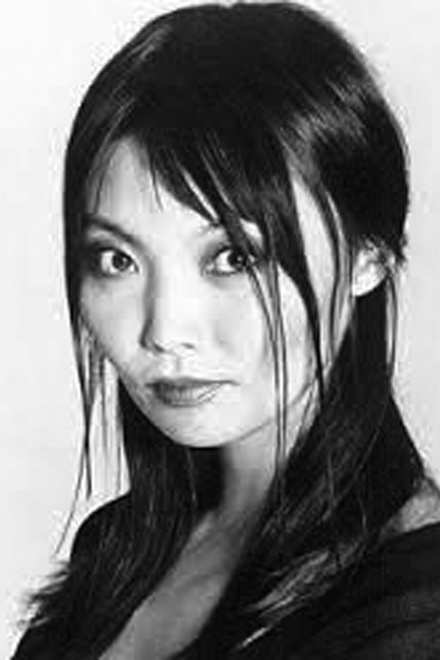
By David Yamaguchi
The North American Post
Recently, I looked up from reading a newspaper in a Rainier Valley shop to see a middle-aged Southeast Asian couple looking at me, pointing and smiling. When I said hello, the woman beamed and explained, “You look just like my brother! My husband thought that you were him.” They were from Burma.
In dance class a year ago, I was stopped while chatting before class by a Chinese student I know only as “Winnie.”
“Why do you speak Japanese?” Winnie demanded to know. When I replied that I am Japanese American, she looked at me in surprise.
“You’re not from Guangjo?”
Winnie explained that faces like mine are common on the streets of that and of other southern Chinese cities.
Such conversations are a routine part of my life. They typically begin with “Are you Chinese?” But I have also heard, “Heeey, comostaca!” and “Annyeonghaseyo!” The similarity of the former to the Spanglish “Hey, comoesta?” gives it away as Tagalog. The latter is “Good day!” in Korean.
The varied greetings tell me two things. The first is that the greeter recognizes me as a potential member of her people. The second is that I have a generic East Asian face. I could be Burmese, Chinese, Filipino or Korean. This possibly reflects my paternal roots on the Japan Sea, not far from the Asian mainland.
By cont rast, I have noticed the opposite phenomenon in the faces of many other Seattle Nikkei. They have faces so distinctively Japanese that they cannot be anything else.
This has led me to wonder, what is “the Japanese face?” What features am I subconsciously recognizing? When I commented on this to one Sansei friend, she smiled and described her face as
“round,” which is a clue in the right direction. But what are the origins of such roundness?
From the writings of Jared Diamond (of Guns, Germs, and Steel fame), part of what I sense comes from tribalism. That is, the fight-or-flight knowledge that comes down to us hard-wired from our hunting and gathering past. Then, when suddenly encountering an unknown group wandering in the forest, survival
depended on being able to quickly distinguish friend from foe.
An example of this i n wr it ten Northwest history is the tale of a young Makah named Swell, who was abruptly shot when he mistakenly walked up on the night campfire of another tribe. But it turns out that there is something else to it as well, as reviewing “Ancient Japan” (Richard Pearson and others, Smithsonian, 1992) and the Internet make clear.
Since at least 14,000 years ago, Japan has been a “mixing bowl” of peoples unlike that which occurred on the Asian mainland. The reason for this is Japan’s banana-shaped, geography, with north
and south ends approaching the Asian mainland 1,120 miles (1,800 km) apart. Owing to lower sea levels during the Ice Ages, animals and people essentially walked to Japan from both ends!
That such land bridges existed is clear from findings including woolly mammoth bones in Hokkaido, northern Japan. Where such great beasts lumbered, spear-wielding humans cannot have been
far behind.
Pearson describes the human settlement of Japan as a four-phase
process. The first wave was the initial colonization of Japan by ancient humans from the mainland 30,000 years ago. A second wave was the arrival of people from the north, 14,000 years ago, which imposed a north-south gradient in appearance on the ancestral Japanese. A third wave was the arrival of more migrants from Asia, from both north and south, during Japan’s Jomon period (10,500-400 B.C.). During this interval, people stopped roaming and began firing clay pottery. The fourth wave comprised
the entry of rice-growing people to southern Japan at the start of its Yayoi period (400 B.C. to A.D. 250).
For me, the academic overview comes alive when we start examining the faces of people who today occupy the lands from which the early Japanese settlers came. As readers already know how Chinese and Koreans look, in the space that remains let us consider what Siberian natives look like.
To get to Hokkaido, the land bridge of the past is today Sakhalin Island. And to get to the mainland end of Sakhalin, I believe people followed the Amur River across southern Siberia. People have followed rivers throughout history.
The eastward-flowing Amur is one of the longest rivers in the world. It begins along the present border of Russia and Mongolia, 1,760 miles inland. The natives who live in this Lake Baikal region today are known as Buryat Mongolians.
Now, what do Buryats look like? One well-known Buryat is Irina Pantaeva, a model from Ulan-Udi, a city near Lake Baikal. It seems to me that some of Ms. Pantaeva’s ancestors made the long walk to Japan.
What do you think, dear reader? Is it just me who sees Japanese features in her face?








